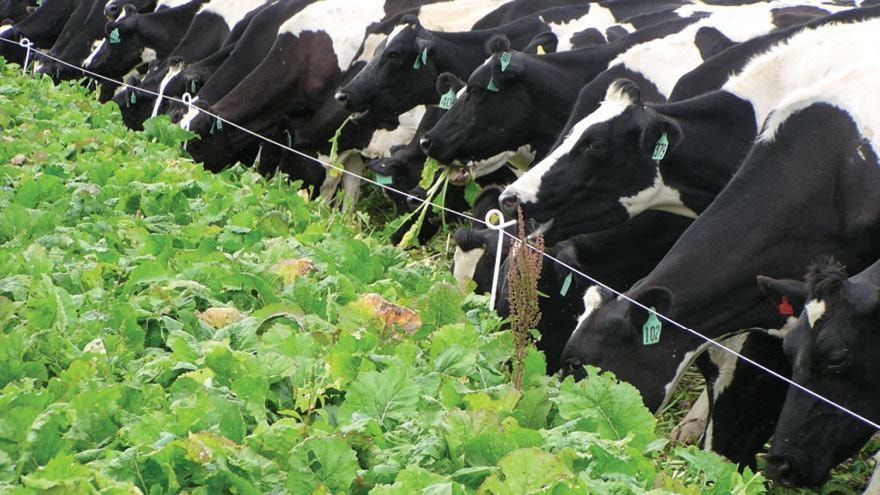
Feed testing forages and yielding crops to help with budgeting
A challenge on-farm at any time of year is feed budgeting. To increase the accuracy of a feed budget, feed testing can help ensure the correct allocation of pasture and forages.
To maintain good animal health and reach body condition score targets by calving, it is important to plan transition onto crops and have an accurate feed budget in place.
Dry Matter (DM) levels vary between crops and are often different each year. Testing DM levels improves the accuracy of crop yielding alongside testing supplements, such as grass silage and baleage.
To demonstrate here are two examples. The first is using average DM figures. A kale crop, with an average DM of 14 percent, is calculated to have a wet weight yield of 100 tonne (T) per hectare (ha). So 100 t x 14 percent = 14 t of DM per ha.
The second example uses DM percentage from a feed test. A kale crop with a feed test DM of 12 percent is calculated to have a wet weight yield of 100 t per ha. So 100 t x 12 percent = 12 t of DM per ha.
This is two tonne of DM less per hectare. Over 10 hectares of crop, there is 20 t of DM less feed due to one small difference in DM. The difference in calculation may change how many stock units graze the crop, feed break size, estimated days grazing on the crop and/or how much supplement is required.
Other benefits of feed testing are assessing feed quality and mineral levels in the feed. Just like DM, feed quality and mineral levels vary greatly in crops and forages. Energy, protein and fibre levels all have a wide range of values. Testing feed quality aids in making decisions around the best supplementary feeds to use. For example, if the crop is low in fibre, more fibre in the diet may be required than was budgeted for. Or the crop could be marginal to low in protein and require good quality grass or lucerne silage to meet the protein requirements of the cow and her growing calf.
Assessing minerals such as calcium, magnesium and phosphorous (P), helps to ensure mineral supplementation meets requirements. For example, P is commonly low in fodder beet crops. A feed test helps to ensure enough P is supplemented to meet the cow’s requirements, which can vary from 6 to 20 grams of elemental P due to the different levels in crops. Trace mineral levels are also included in an extended feed test and provide valuable information about possible risk of deficiencies.
Contact your local PGG Wrightson Technical Field Representative to organise feed testing on your crops or forages.
| Crop | Dry matter percentage average | Dry matter percentage range |
| Kale | 14% | 8 to 22% |
| Swedes/turnips | 10.6% | 6.2 to 19% |
| Fodder beet | 15% | 6.2 to 25% |
| Grass silage | 35% | 16 to 55% |
Reference: PGG Wrightson feed testing data compiled from Hills Laboratories results 2009 to 2019.
